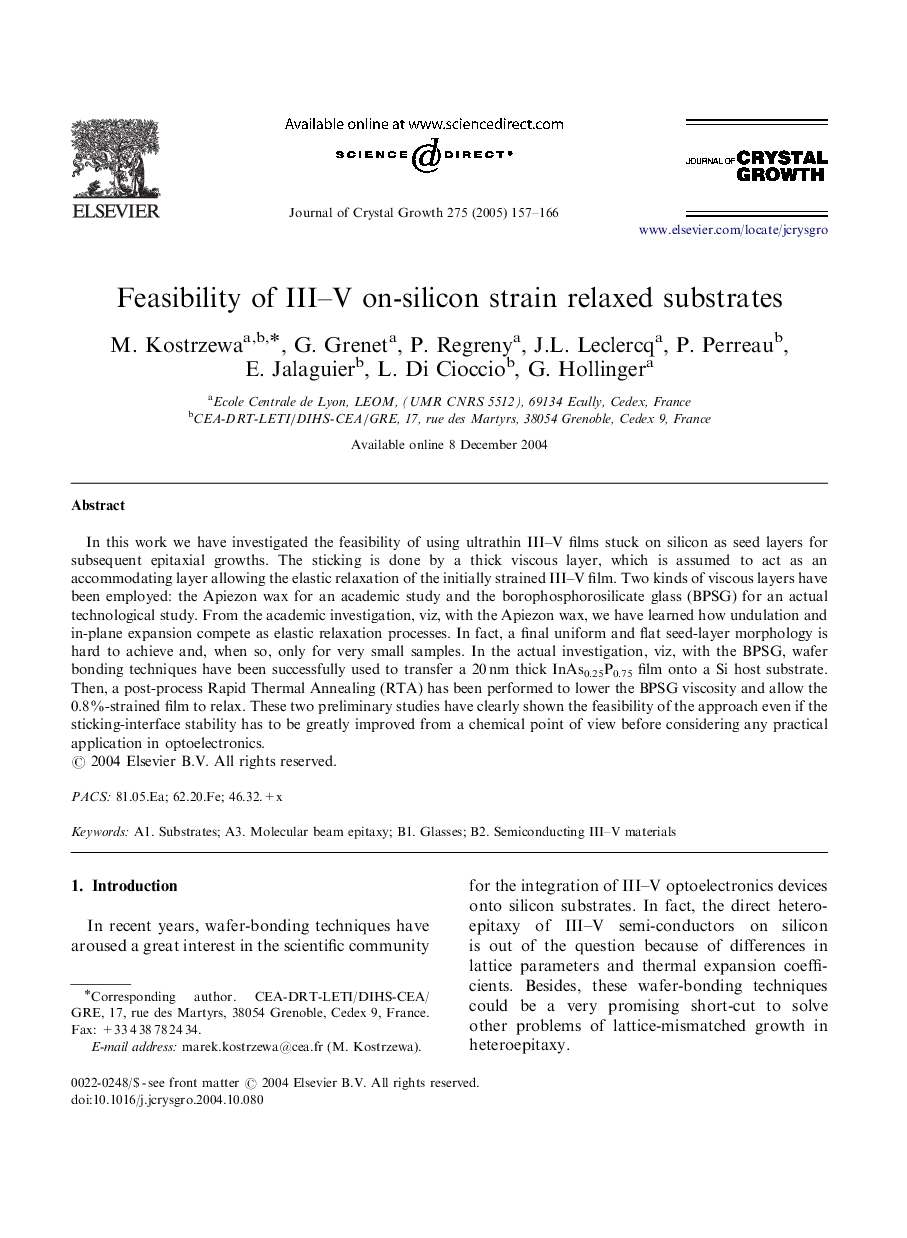| Article ID | Journal | Published Year | Pages | File Type |
|---|---|---|---|---|
| 9830135 | Journal of Crystal Growth | 2005 | 10 Pages |
Abstract
In this work we have investigated the feasibility of using ultrathin III-V films stuck on silicon as seed layers for subsequent epitaxial growths. The sticking is done by a thick viscous layer, which is assumed to act as an accommodating layer allowing the elastic relaxation of the initially strained III-V film. Two kinds of viscous layers have been employed: the Apiezon wax for an academic study and the borophosphorosilicate glass (BPSG) for an actual technological study. From the academic investigation, viz, with the Apiezon wax, we have learned how undulation and in-plane expansion compete as elastic relaxation processes. In fact, a final uniform and flat seed-layer morphology is hard to achieve and, when so, only for very small samples. In the actual investigation, viz, with the BPSG, wafer bonding techniques have been successfully used to transfer a 20Â nm thick InAs0.25P0.75 film onto a Si host substrate. Then, a post-process Rapid Thermal Annealing (RTA) has been performed to lower the BPSG viscosity and allow the 0.8%-strained film to relax. These two preliminary studies have clearly shown the feasibility of the approach even if the sticking-interface stability has to be greatly improved from a chemical point of view before considering any practical application in optoelectronics.
Keywords
Related Topics
Physical Sciences and Engineering
Physics and Astronomy
Condensed Matter Physics
Authors
M. Kostrzewa, G. Grenet, P. Regreny, J.L. Leclercq, P. Perreau, E. Jalaguier, L. Di Cioccio, G. Hollinger,
